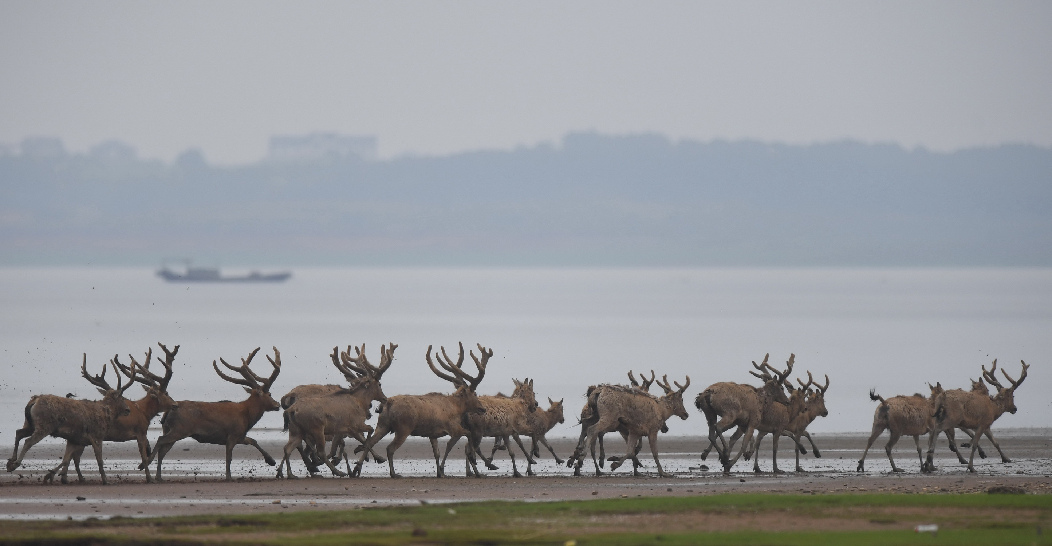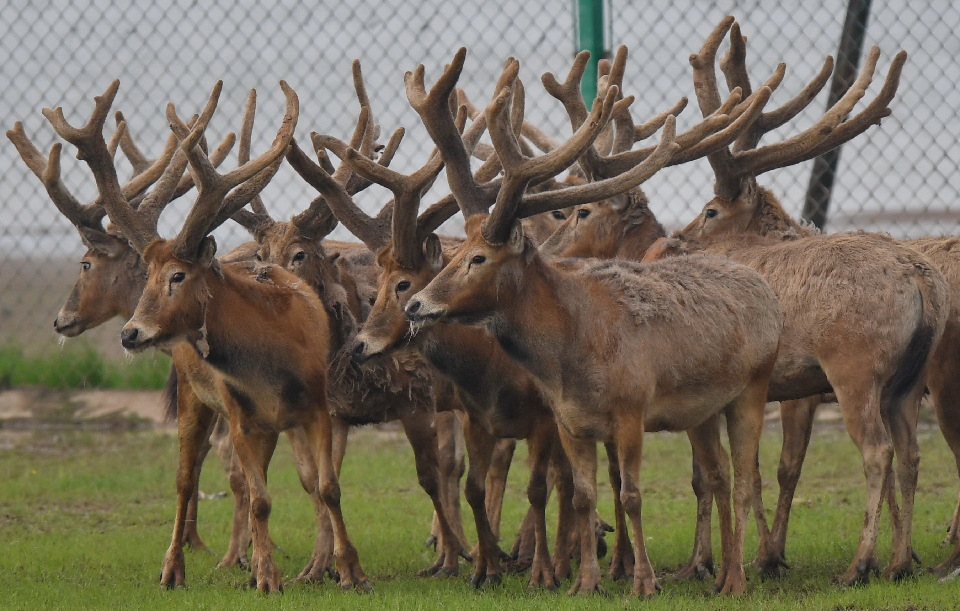
A herd of milu deer gallop in the wetland around Poyang Lake in east China's Jiangxi Province. (Xinhua/Zhou Mi)
NANCHANG, March 20 (Xinhua) -- The population of milu deer around China's Poyang Lake has increased from 47 to about 55 since a group of the rare deer was released there about a year ago, conservation officials said Wednesday.
Yang Qibo, who is in charge of Poyang County's wildlife protection station, told Xinhua that they had recorded the birth of eight deer over the past year.
"The herd of deer now has plenty of food and relatively fixed habitats," said Yang.
Last April, to improve biodiversity in the local wetland ecosystem, China released 47 milu deer into the wild around Poyang, the country's largest freshwater lake where the species disappeared around 1,000 years ago.
Local officials said the deer had adapted well to the new environment and coexisted peacefully with local villagers.
"Whenever villagers spot a deer, they always report it to wildlife authorities. In cases when their crops were trampled, they usually chose to drive the deer away instead of hurting them," Yang said.

A herd of milu deer wait to be set free in the wetland around Poyang Lake in east China's Jiangxi Province. (Xinhua/Zhou Mi)
Milu, also known as Pere David's deer, is endemic to China where it bears the nickname "sibuxiang," or "like none of the four" for its unique features -- a horse's face, a donkey's tail, cow-like hooves and a stag's antlers.
The wetland deer species is placed under A-level state protection after overhunting and habitat loss led to its near extinction in the early 20th century.
Now about 6,700 milu deer live across the country, including 1,500 in the wild, according to Bai Jiade, director of the Beijing Milu Ecological Research Center. Enditem



